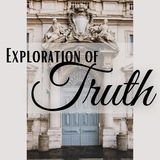Forwarded from Tartaria & History Channel (Jeanne Roman)
Nine centuries House of Eltz
Eltz Castle in Germany is considered the epitome of a German knight’s castle. Throughout the centuries, it has remained in the possession of the original family and was never destroyed. Its history is a wealth of myths and events, famous personalities and great art.
The Eltz Nature Reserve is home to all the typical, and also some very rare, animal and plant species found in or near water, in brushwood or in forest biotopes.
Partnership with @ITORUS
Join us now
Channel:
https://tttttt.me/TartariaHistoryChannel
Chat:
https://tttttt.me/TartarianEnglishGroup
Eltz Castle in Germany is considered the epitome of a German knight’s castle. Throughout the centuries, it has remained in the possession of the original family and was never destroyed. Its history is a wealth of myths and events, famous personalities and great art.
The Eltz Nature Reserve is home to all the typical, and also some very rare, animal and plant species found in or near water, in brushwood or in forest biotopes.
Partnership with @ITORUS
Join us now
Channel:
https://tttttt.me/TartariaHistoryChannel
Chat:
https://tttttt.me/TartarianEnglishGroup
Forwarded from The Exaltation of Beauty
The Map of Hell (La mappa dell'Inferno), between 1480 and 1490, by Sandro Botticelli, 33 cm × 47.5 cm, silverpoint, brown and black ink, tempera, Vatican Library
The Map of Hell by Botticelli – regularly called The Abyss of Hell or La Voragine dell’Inferno – is one of the parchments that the famous Italian painter designed to illustrate an edition of The Divine Comedy by Dante Alighieri. The Map of Hell parchment shows the geography of Hell in the classical funnel section, which was used in later iconography.
Our most important early source on Botticelli's drawings is Giorgio Vasari, who wrote in 1550 in his Lives of the Artists that: "Having completed the work assigned to him, he returned at once to Florence, where, being whimsical and eccentric, he occupied himself with commenting on a certain part of Dante, illustrating the Inferno, and executing prints, over which he wasted much time, and, neglecting his proper occupation, he did no work, and thereby caused infinite disorder in his affairs."
The Map of Hell by Botticelli – regularly called The Abyss of Hell or La Voragine dell’Inferno – is one of the parchments that the famous Italian painter designed to illustrate an edition of The Divine Comedy by Dante Alighieri. The Map of Hell parchment shows the geography of Hell in the classical funnel section, which was used in later iconography.
Our most important early source on Botticelli's drawings is Giorgio Vasari, who wrote in 1550 in his Lives of the Artists that: "Having completed the work assigned to him, he returned at once to Florence, where, being whimsical and eccentric, he occupied himself with commenting on a certain part of Dante, illustrating the Inferno, and executing prints, over which he wasted much time, and, neglecting his proper occupation, he did no work, and thereby caused infinite disorder in his affairs."
👍5❤3🤔1
